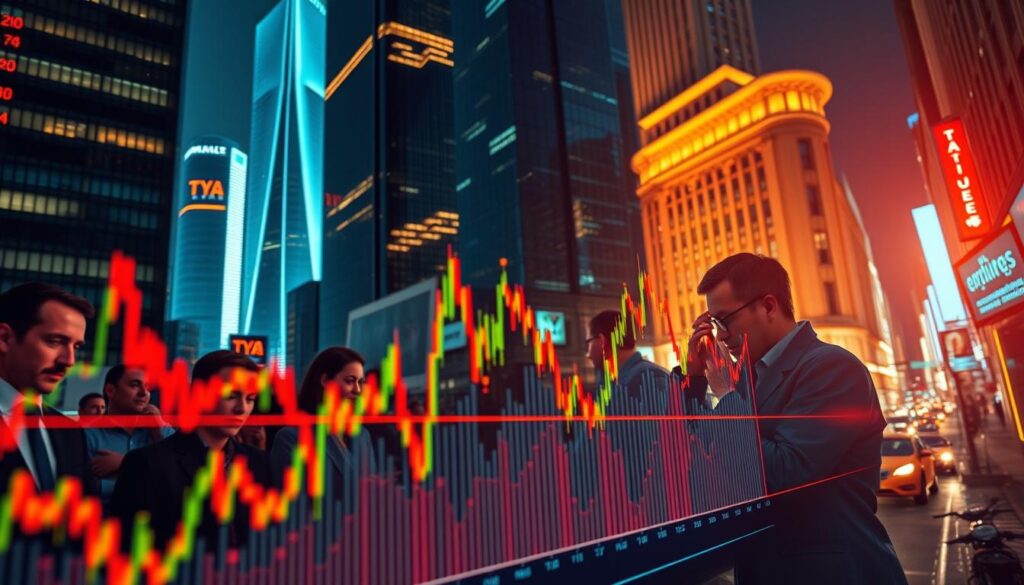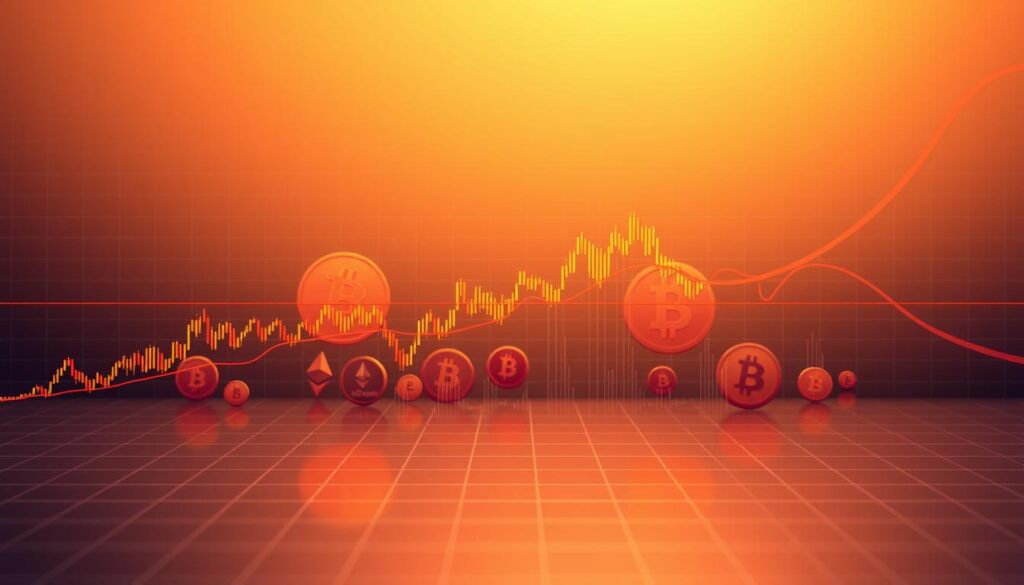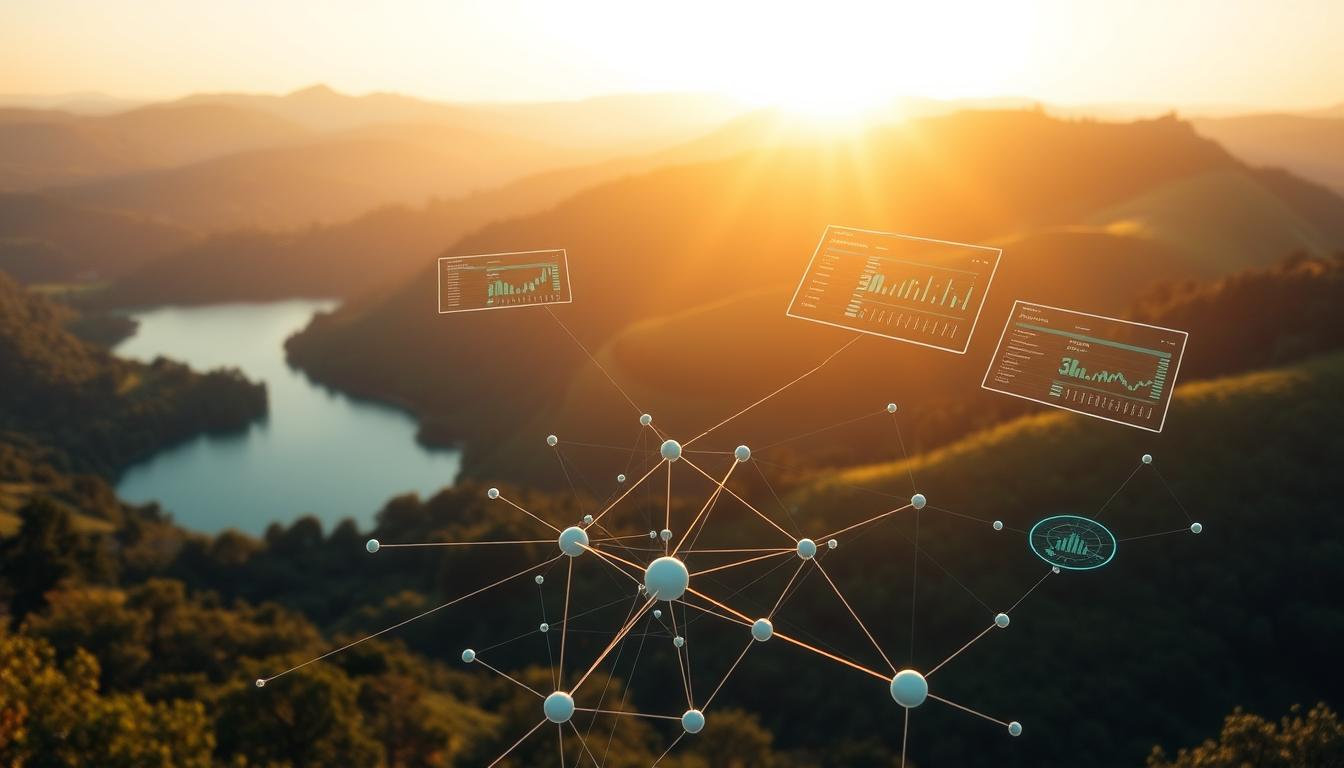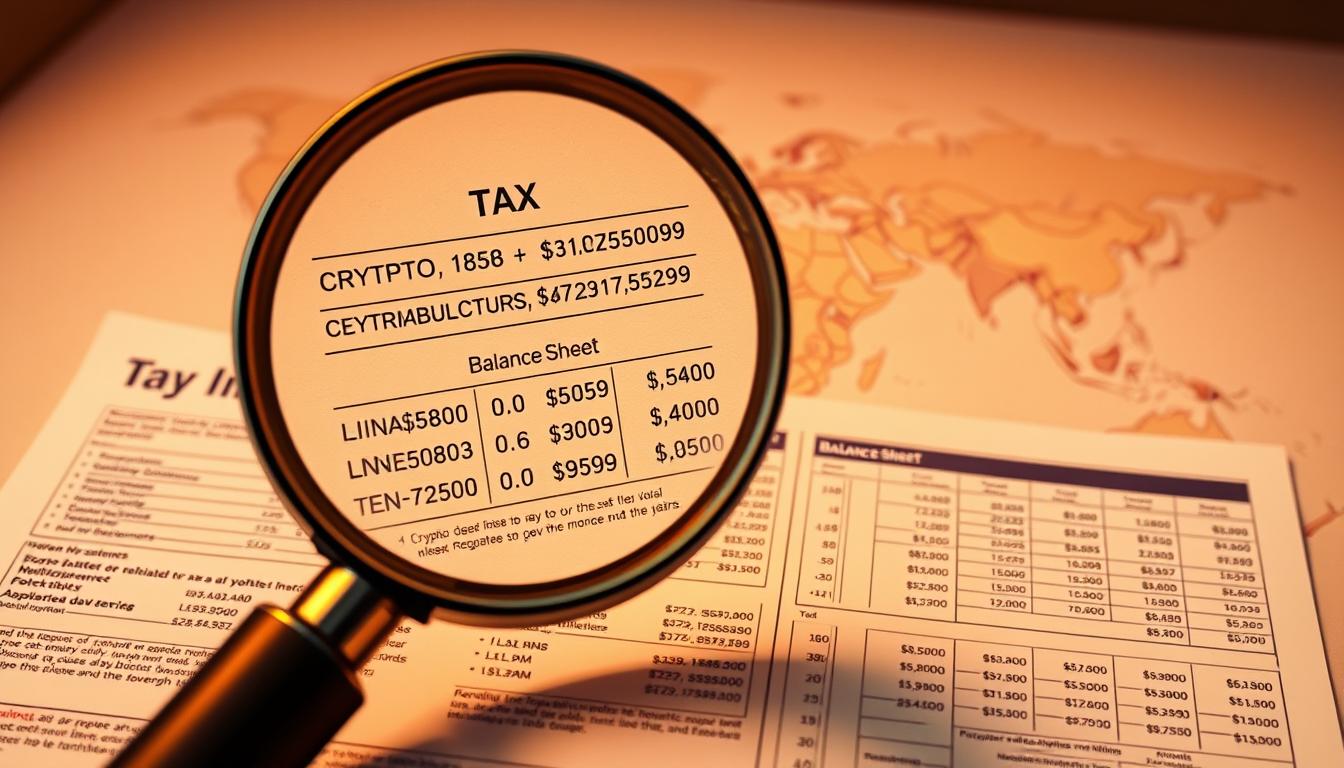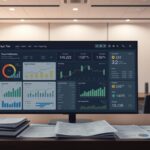Now Reading: Unlock the Power of Real World Assets (RWA): A How-to Guide
- 01
Unlock the Power of Real World Assets (RWA): A How-to Guide
Unlock the Power of Real World Assets (RWA): A How-to Guide

Imagine turning physical property, artwork, or even intellectual rights into digital tokens tradable globally in seconds. Blockchain technology is reshaping value exchange through tokenization, a process converting tangible and intangible items into programmable digital assets. This innovation unlocks liquidity for traditionally illiquid holdings while democratizing access to high-value investments.
The financial sector is witnessing a seismic shift as tokenized economic value bridges traditional systems with decentralized networks. Analysts predict this market could redefine global wealth distribution, with early adopters gaining strategic advantages. From fractionalized real estate to digitized commodities, the applications stretch across industries.
This guide explores how blockchain-powered solutions create borderless markets for previously inaccessible holdings. We’ll break down the mechanics of converting physical or legal claims into verifiable digital tokens. You’ll discover why institutions and individual investors alike are racing to capitalize on this trillion-dollar frontier.
Key Takeaways
- Tokenization creates digital representations of physical/complex assets
- Blockchain enables 24/7 global trading of previously illiquid holdings
- Market potential spans multiple industries beyond traditional finance
- Fractional ownership models democratize investment opportunities
- Smart contracts automate compliance and ownership transfers
Introduction to Tokenizing Real-World Assets
Digital representation of physical value through blockchain opens new investment avenues. This process converts ownership claims into programmable units, making traditionally complex holdings accessible through fractional shares. Unlike paper certificates or centralized databases, blockchain records ensure tamper-proof tracking across borders.
Understanding the Tokenization Concept
Tokenization acts like a digital twin for physical or legal holdings. A painting becomes 10,000 tradable units. A skyscraper transforms into micro-shares purchasable with $50. This shift occurs through smart contracts that encode ownership rules and automate compliance.
Industries now leverage this method for:
- Commodities like gold or oil
- Corporate bonds and private equity
- Rare collectibles and patents
Historical and Emerging Trends
Early digitization efforts began with stock market electronic trading. Blockchain now accelerates this evolution. Financial institutions tokenize treasury bonds, while galleries fractionalize Picasso works. Over $30 billion in tokenized commodities traded last year alone.
Three sectors driving adoption:
- Finance: 24/7 trading of private market instruments
- Art: Democratized access to blue-chip pieces
- Infrastructure: Shared ownership of renewable energy plants
What Are Real-World Assets (RWA)?
From skyscrapers to patents, valuable items exist beyond digital realms—until now. Known as real-world assets (RWA), these concrete and abstract holdings form the foundation of modern economies. Their transition into blockchain-compatible formats begins with clear categorization.

Defining Physical and Digital Assets
Physical assets, also called tangible assets, range from industrial machinery to rare art collections. These items demonstrate material worth, requiring storage and maintenance. Common tangible assets include:
- Precious metals and energy commodities
- Vintage vehicles and collectible items
- Commercial properties and infrastructure
Unlike physical assets, intangible counterparts derive value from legal frameworks or intellectual creation. These digital-friendly holdings encompass:
- Government bonds and corporate equity
- Trademarks and patented inventions
- Royalty streams and copyrights
Both asset types maintain provable ownership structures and transfer protocols. Traditional systems often limit access due to high entry costs or geographic constraints. These diverse assets form the backbone of global markets. Tokenization bridges these gaps by digitizing claims while preserving inherent value.
The Strategic Advantages of Tokenized Assets
Traditional markets are evolving beyond geographic and financial barriers through digital innovation. Tokenization introduces transformative benefits that reshape how value moves globally.
Efficiency, Liquidity, and Decentralization
Liquidity becomes instantaneous with tokenization. Previously stagnant holdings like fine art or private equity can now trade 24/7 on digital exchanges. Markets expand as fractional shares let investors buy slices of high-value items for under $100.
Blockchain’s transparent ledger tracks every transaction in real time. This eliminates disputes over ownership history while reducing paperwork. Three core improvements stand out:
- Global access to markets once limited to institutions
- Automated compliance through smart contracts
- 50% faster settlements than traditional financial systems
Decentralization cuts reliance on brokers and banks. Investors interact directly via programmable tokens, slashing fees. A ski resort tokenized in 2023 saw 12,000 micro-investors participate—impossible under old models.
These shifts create new opportunities for portfolio diversification. Token holders gain exposure to vineyards, rare metals, or patents alongside stocks and bonds. Efficiency gains compound as more industries adopt this framework.
Integrating Blockchain and Smart Contracts in Asset Tokenization
Financial systems are undergoing a silent revolution through code-driven automation. At the core lies blockchain technology, enabling tamper-proof records and programmable value transfers. This foundation supports smart contracts—self-executing agreements that redefine asset management.

Powering Cross-Chain Connectivity
Chainlink emerges as the backbone for institutional-grade tokenization. Its infrastructure bridges physical holdings with onchain ecosystems through:
- Proof of Reserve audits for collateral verification
- Real-time market data feeds for accurate pricing
- Cross-Chain Interoperability Protocol (CCIP) for multi-network transfers
Major players like ANZ Bank now use these tools to move billions in value across chains. A corporate bond tokenized on Ethereum can flow to Polygon for trading, then settle on Avalanche—all while maintaining audit trails.
Building Trust Through Technology
Security protocols within blockchain networks address traditional finance pain points:
- Immutable transaction histories prevent data manipulation
- Decentralized validation reduces single-point failures
- Cryptographic signatures ensure ownership authenticity
Smart contracts automate critical functions like dividend payouts and regulatory checks. When DTCC processes transactions, its system now integrates onchain verification layers—cutting settlement times from days to minutes.
This technical evolution allows museums to tokenize artifacts and manufacturers to digitize equipment leases securely. As Swift’s 11,000+ banking partners adopt these frameworks, global liquidity barriers continue crumbling.
A Step-by-Step Guide to Tokenizing Traditional Assets
Transforming conventional holdings into digital tokens requires precise execution across five critical phases. This method bridges physical value with blockchain efficiency, enabling fractional ownership and global trading opportunities. Proper implementation ensures compliance while maximizing liquidity potential.
Asset Selection and Token Specifications
Begin by identifying holdings with clear ownership rights and market demand. High-value items like commercial properties or patents often rank as prime candidates. Evaluate regulatory frameworks and existing legal structures before proceeding.
Determine token type based on asset characteristics:
- Fungible tokens (ERC20) for divisible items like commodities
- Non-fungible tokens (ERC721) for unique collectibles
Seamless Blockchain Integration
Selecting the appropriate network balances security needs with transaction speed. Public chains like Ethereum offer decentralization, while private solutions cater to institutional preferences. Interoperability tools enable cross-chain transfers, expanding investor reach.
Integrate oracle networks like Chainlink to connect offchain data feeds. These systems verify:
- Asset valuations
- Ownership records
- Regulatory updates
Issuance and Offchain Data Verification
Deploy smart contracts to encode ownership rules and automate distributions. Third-party validators like Chainlink Proof of Reserve confirm asset backing through real-time audits. Transparent verification builds trust among participants throughout the token lifecycle.
Finalize the process by minting tokens and listing them on compliant exchanges. Continuous monitoring ensures alignment between digital tokens and their physical counterparts.
Real-World Use Cases: From Real Estate to Trading Cards
Physical markets are merging with digital ecosystems through blockchain innovation. This shift enables concrete applications that reshape ownership models across industries. Below, we examine two sectors leading this transformation.

Transforming Real Estate Ownership
Real estate tokenization turns properties into divisible digital shares. A $5 million apartment building becomes 50,000 tokens at $100 each. Blockchain records every transaction, creating permanent proof of ownership history.
Smart contracts handle complex tasks automatically. Rental income gets distributed proportionally to token holders. Sales trigger instant transfers when payment conditions meet coded rules. This system lets small investors build diversified property portfolios with minimal capital.
Digitizing Collectibles and Other Tangible Assets
Sports memorabilia demonstrates blockchain’s value for rare items. A 1952 Mickey Mantle card becomes an NFT with embedded authenticity proofs. Owners gain new financial tools through tokenized asset platforms.
Key advantages over physical versions:
- No storage fees or insurance costs
- 24/7 global trading with gas fees under $5
- Collateralization in DeFi lending markets
Digital trading cards often outvalue physical counterparts due to enhanced utility. Artists now embed royalty clauses in NFTs, earning commissions on secondary sales automatically.
Navigating Risks and Upholding Transparency in RWA Tokenization
Tokenization introduces revolutionary opportunities but demands rigorous risk management. Unlike purely digital assets, these systems bridge physical holdings and blockchain networks, creating unique challenges.
Securing Physical Backing and Digital Infrastructure
Custody solutions form the bedrock of trustworthy tokenization. High-value items like fine art or industrial equipment require:
- Geographically distributed storage facilities
- 24/7 monitoring with blockchain-tracked access logs
- Insurance policies matching asset valuations
Smart contracts powering these systems face constant security threats. Leading platforms now implement:
- Triple-audit processes by independent firms
- Bug bounty programs exceeding $1M rewards
- Real-time transaction monitoring tools
MakerDAO demonstrates effective risk mitigation, using diversified collateral including tokenized loans and commodities to back its $5B DAI stablecoin ecosystem. This approach maintains stability despite market fluctuations.
Market liquidity remains critical for long-term success. Projects must cultivate:
- Strategic partnerships with regulated exchanges
- Incentive programs for market makers
- Cross-chain compatibility features
Transparency protocols set tokenized systems apart from traditional finance. Automated reporting tools provide investors with:
- On-demand asset verification through oracle networks
- Quarterly reserve audits published onchain
- Compliance dashboards tracking regulatory changes
Embracing the Future: Key Insights and Next Steps in RWA Tokenization
Global finance stands at the brink of a structural overhaul powered by blockchain technology. Tokenization redefines value exchange through programmable digital ownership, creating interconnected markets where physical holdings and digital systems merge seamlessly. This shift addresses legacy challenges like settlement delays and opaque processes while unlocking unprecedented liquidity.
The next evolution will see onchain ecosystems dominate financial infrastructure. Hundreds of specialized chains could host trillions in digitized value, linked through universal protocols. Imagine commodities traded in Tokyo settling instantly on New York-based platforms via automated bridges—all secured by decentralized ledgers.
Three critical developments will shape this transition:
- Interoperability standards enabling cross-chain asset transfers
- Regulatory frameworks supporting hybrid physical-digital ownership
- Advanced oracle networks verifying offchain data in real time
For investors, this means broader access to tokenized economic systems previously limited to institutions. As transparency improves and risks decline, traditional finance models will adopt blockchain-native solutions. The result? A financial landscape where anyone can own fractions of skyscrapers, patents, or vintage cars through secure digital tokens.
Early adopters who master this process will lead the charge toward equitable value distribution. The tools exist—now comes the era of execution.
FAQ
How does tokenization improve access to traditional markets?
Tokenization breaks down barriers by enabling fractional ownership. This allows smaller investors to participate in high-value markets like real estate or fine art through digital tokens. Platforms like Ethereum and Solana facilitate this shift by reducing entry costs.
What role do smart contracts play in asset tokenization?
Smart contracts automate processes such as ownership transfers, dividend distributions, and compliance checks. Chainlink’s oracle networks enhance these contracts by securely integrating offchain data, ensuring accuracy and reducing manual oversight.
Can tokenized assets maintain regulatory compliance?
Yes. Blockchain’s immutable ledger provides audit trails for regulatory reporting. Projects often partner with legal frameworks like Securitize to align tokenized offerings with existing securities laws, ensuring transparency and investor protection.
What risks are associated with custody in tokenized systems?
Centralized custodians can create single points of failure. Decentralized solutions, such as multi-signature wallets or non-custodial platforms like Metamask, mitigate this by distributing control across verified parties.
How does blockchain interoperability affect asset liquidity?
Cross-chain protocols like Polkadot or Cosmos enable tokens to move seamlessly between networks. This expands market reach, connects fragmented liquidity pools, and supports faster settlements compared to traditional systems.
Are physical collectibles viable for tokenization?
Absolutely. Platforms like OpenSea have pioneered fractional ownership of rare items, from trading cards to vintage cars. Each token represents provable ownership, backed by secure storage solutions and insured custodians.
What steps ensure accurate offchain data in tokenization?
Oracles like Chainlink fetch real-world data (e.g., property valuations) and feed it into smart contracts. This bridges gaps between physical asset conditions and their onchain representations, maintaining trustless verification.
How do tokenized assets impact traditional financial institutions?
Banks and funds are adopting tokenization to streamline operations. J.P. Morgan’s Onyx Digital Assets network, for example, uses blockchain to settle transactions instantly, cutting costs and eliminating intermediaries.



